Tides of Flame
A Shorter History of a Northwest E.L.F. Cell
[ed. – Here we present a tale that was first serialised in the now-defunct Seattle periodical ‘Tides of Flame’, not long after documentary-makers had released a longer film called ‘If a Tree Falls...’ about the rise and fall of one Earth Liberation Front (E.L.F.) group active in the ‘90s and ‘00s. Whereas that production came off as somewhat victimistic and defeatist (not to mention giving snitches and investigators themselves an inordinate amount of airtime), what we liked about this series was their placement of these events into the social context from which they arose; including more general activity across ‘North America’ from Vancouver to Mexico City, by the E.L.F. and others. Ordinarily, we would never read stories like this in print. The tragic part, of course, is that this amount of detail is publicly-known only because of the betrayal at the heart of the saga of Operation Backfire, the largest domestic terrorism investigation in the history of the U.S.
Doubtless, this raises the question of what end ‘biography’-type accounts serve; but despite the danger of creating ‘celebs’ of the struggle, and them transforming from life-sized to larger-than-life, we have found it inspiring and empowering in our own time to come across such narratives. More than anything, what made us want to share this is the fact that rather than only cheerleading (though there may be an element of that at times!), we have here a very human telling of lives that merged, strengthened, but then split, fell apart, and dispersed – a common experience of those who enter environments of struggle. The recent renewal of excitement over the novel ‘Letters of Insurgents’ is for good reason partly because of such an aspect being portrayed so heart-breakingly powerfully. Here, too, we have the people who change, drift apart, who keep struggling and who don’t, who enter the frustrations (and potential pitfalls) of ‘wanting to go further’ or who just fall apart under pressure. Certainly not all of these E.L.F.‘ers were anarchists, but these aspects their stories will resonate with many of us within that space; regardless of whether the ‘urban guerrilla cell’ was a method we see (or have lived) as our own.
The critiques – those of interest to us at least – leveled at the E.L.F. model at the time (such as that the radical environmentalist or animal liberation discourse ‘specialised’ these struggles by failing to tie them into capitalism or civilisation more generally, such as that for all that the occasional communique might have referred to other other “isms” that the perpetrators were concerned about, these were called into existence as a list of single issues, “a broad liberal program that has taken on extreme tactics”), or those since (such as the worthwhile essay ‘The Telescope or the Kaleidoscope’, critical amongst other things of the founding principles of the model such as non-violence) won’t be discussed here. Suffice to say that we find the inclusion of the Mexican and Russian groups significant in the text, in that this charts the drift from a more leftist, eco-activist discourse to an anarchist, anti-civilisation and insurrectional one that the E.L.F. has seen internationally, even as the (former) fighters described below languish in prison, on the run, or in the worst cases under the protection of their new-found Father State for their services. Both the struggle mentioned below in Khimki forest, and the eco-radical scene in Mexico which has since splintered into various directions (not all of them anarchist), on a practical level have eschewed non-violence (as you will see from the early E.L.F. Mexico action claim we have included to end on); and despite occasional uninvited interventions of the survivors of the North American E.L.F. Press Office still talking in terms of ‘environmental justice’ and the like, the generation of E.L.F. that exists today whose actions they reference would seem to have largely moved beyond such incoherent arguments, targeting all domination.
We publish this in solidarity with many earth-defenders of the world, whatever name they do or don’t use. Whatever one makes of claiming actions under an acronym such as the E.L.F., it is inspiring to know of the high-impact actions that these people regularly carried out in these past decades – without fetishising the level of material damages above other considerations, it seems that those of even humble means can devastate the facilities and infrastructures that surround us, and that is a tale worth telling. But this is also a cautionary tale; and not just of what is at stake in terms of repression (sadly, since this was written two of the four fugitives – Rebecca Rubin [see Return Fire vol.2 pg73] and Justin Solondz – have been jailed) and the potential for today’s comrade to become tomorrow’s traitor to the State. Nathan Block and Joyanna Zacher, two who did not snitch and who served their sentences with apparent dignity, have since release been outed as ‘anti-modern’ fascists and white separatists by longtime E.L.F. prisoner supporters and their former comrades. To us, as well as various strains of eco-radicalism in both Russia and Mexico also having gone in differently disgusting directions at times, this renews the importance of never separating ‘ecology’ or ‘animal liberation’ from our broader anarchist ideas, or making ‘marriages of convenience’ with such characters; rightists, leftists or the so-called ‘apolitical’, always distanced from our anti-politics.]

Sunshine. A hippy name, dark hair, fierce eyes. Josephine Sunshine Overaker. She went out one night with her boyfriend in the woods of Oregon, put bombs under a US Forest Service truck and on the roof of the Ranger station.
She spray-painted a circle-A on the side of the building along with the words “STOP RAPING OUR FORESTS.” She laughed hysterically as she fled into the woods, the flames dancing behind her in the darkness, a demon beside her, and the future filled with fires and shadows. Over the next ten years, Josephine would transform from a free woman into an exile, living an anonymous life and outrunning her past. We do not know where she is, nor what she is doing, but she has eluded the clutches of the police, this person with the name Sunshine.
She and two other men launched the first attacks of a fledgling Earth Liberation Front (ELF) cell in the Pacific Northwest. The arson described above took place on October 28th, 1996, in Detroit, Oregon. Two days later in Lane Country, Overaker and her group of three burned down the Oakridge Ranger Station. All of them had been involved in peaceful protests to stop the devastation of old growth forests in Oregon. They had seen these tactics fail endlessly and had seen Forest Service Rangers brutalize and imprison their friends who were attempting to defend the earth. When these arsons took place, many environmental activists did not know what to think. The most lucid of them were happy, understanding that their opponent had been attacked. Unfortunately, some activists were afraid and wanted to distance themselves from what had happened. They had no idea of what would come next in the summer of 1997.
It is not known why Overaker did not participate. What is known is that her group had grown and six of them burnt down a horse slaughterhouse in rural Oregon on July 21, 1997. The Cavel West slaughterhouse bought wild horses that had been captured by the US Fish and Wildlife Service and turned them into meat. The massive fire they lit completely destroyed the plant. It never opened again. For months peaceful protesters had written letters and children had held signs outside saying “DON’T KILL HORSIES,” all to no avail. The ELF managed to destroy a despicable company that murdered the last remaining wild horses in Oregon. The ELF destroyed it in one night and with one action.
On November 30th, 1997, Overaker, her boyfriend, and three others burnt down a Bureau of Land Management wild horse corral in south-western Oregon. Before burning down the facility, the group freed 400 horses back into the wild. Whereas the previous year the cell had focused its attention on the Forest Service, their activity in 1997 was dedicated to freeing wild animals that were being imprisoned and slaughtered. The members of the group proved themselves to be against anyone who wished to destroy the wild earth, whether it be a private company or a government agency.
In 1997, different ELF cells that did not know each other carried out attacks in Utah against a fur-breeding plantation and at UC Davis in California against their still under-construction Center for Comparative Medicine. Both of these targets suffered arson attacks for their practices of enslaving, torturing, and murdering animals. At the time, the action against UC Davis was seen as an insane act against a benevolent institution. Now, with everyone obsessed with free-range chicken and green technology, many people might not view the arson with the same outrage expressed in 1997.
In Olympia on June 21st, 1998, the group launched a new offensive on the US Department of Agriculture, the greedy overlords of the forests. But on the day before the attack, Overaker was caught shoplifting items needed in the planned arson. After being released from jail, she was told she could not participate in the action. Knowing this was true, she decided to establish a firm alibi while her friends continue onward. The next morning, four members of her cell burnt down a US Department of Agriculture building.
Simultaneously, a separate ELF cell burned down another Department building in a different part of town. On one day, the entire Puget Sound area saw fires burning in the capitol.

The Canadian lynx, threatened by the ski expansion at the Vail resort torched in 1998
Despite being far ahead of most people around them (who were busy loving Clinton and “prosperity”), these groups were pursued by the FBI, labeled as terrorists and vilified by large segments of the environmental movement. Groups like the Sierra Club publicly denounced the ELF and applauded the government’s efforts. Nevertheless, true to themselves and their ideas, this Pacific Northwest cell of the ELF proceeded to scope out a ski resort in Vail, Colorado, make their plans, climb up a mountain and burn down a multi-million dollar project that would ravaged the ecosystem around it. On October 19th, 1998, everyone watching the nightly news saw images of a giant ski lodge burning atop a snow covered hill. The arsonists had the remarkable experience of enjoying the true splendor of a mountain before burning a structure that ensured that same mountain’s destruction.
This was the high moment of the group. It appeared as if they could do no wrong, that the tide would turn, and that people would rise up and escape the stupor of the late nineties. We have focused our narrative around Josephine Sunshine Overaker for a simple reason: she is one of the few who did not betray their friends, renounce their beliefs, or go to jail. She is one of the few who remained free. The saddest part of the story is far off, so for now, please take comfort in the fact that she is free, that not all was lost, and that the struggle continues to this day across the same planet she fought to protect.
On the FBI wanted poster, where she is described as a terrorist, it lists Overaker’s possible professions as a firefighter, a midwife, a sheep tender, or a masseuse. This is the type of person they fear and seek to destroy.
Just before Christmas in December of 1998, the northwest Earth Liberation Front cell decided to strike the headquarters of US Forest Industries in Medford, Oregon. At the time, the group was based largely in Eugene and it was from here that they planned their attack. The members of the group who decided to carry out this particular action were Jacob Ferguson, Kevin Tubbs, and Kendall Tankersley. After deciding on a date, the three decided they needed a fourth member, and so Kevin Tubbs asked his friend Rebecca Rubin, another member of the group, to help them.
They drove down to Medford, placed an incendiary device near the building and left. But the next morning there was no news of any arson. After scouting out the headquarters, Jacob Ferguson saw that the device was still there in plain sight having failed to ignite. He contacted Kendall Tankersley and asked her to retrieve the device while he drove on to Sacramento to be with his mother for Christmas. When Tankersley drove back to Medford with an anonymous person who knew nothing of her task, she decided to not risk returning to the building.
After Christmas, Ferguson and Tankerley arranged to meet in Ashland, just south of Medford. Ferguson had his young son with him and the three returned to the headquarters. Ferguson got out of the car, made a new ignition device, and then drove with Kendall and his son to Dunsmuir, California where they rented a hotel room. The next morning they learned on the news that their arson had been successful. The entire headquarters of US Forest Industries was destroyed for a loss of $900,000. In the communique that was released in the middle of January, 1999, the group wrote, “This was done in retribution for all the wild forests and animals lost to feed the wallets of greedy fucks like Jerry Bramwell, U.S.F.I. President. This action is payback and it is a warning to all others responsible that we do not sleep and we won’t quit. For the future generations we will fight back.” This last line is significant, given that Ferguson’s young son was in the car and the fact that we are writing about them now, thirteen years later [when published].
In May of that year, different members of the group reconvened to plan another attack. Their next target was to be a meat company in Eugene. On May 9th, Jacob Ferguson, Stanislas Meyerhoff, Kevin Tubbs, Chelsea Gerlach, Josephine Overaker and (presumably) Joseph Dibee set out to burn down the Childers Meat Company. After Overaker and Dibee cut the fence, others placed and lit an incendiary device near a gas line in the building. As they were all driving away, they heard on their scanner that the fire had been reported. By the next morning, the building had been totally destroyed. In their communique released shortly after, the group wrote, “As long as companies continue to operate and profit off of Mother Earth and Her [sic] sentient beings, the Animal Liberation Front will continue to target these operations and their insurance companies until they are all out of business.” Rather than claim this action as the ELF, they claimed it as the Animal Liberation Front (ALF), a sister international group.
Over the course of 1999, the group did not commit any other large actions. After having grown to be over a dozen strong, the members navigated and agitated inside the growing links between the anti-globalization movement and the environmental movement. At the time, the potential for a mass revolt against global capitalism seemed possible. All across the world were millions of outraged people attempting to fight against the de-regulation of the global market and the destruction of their traditional ways of life. For the members of the ELF, this was their chance to bring the fight to capitalism itself. They did not want a more humane capitalism as did their contemporaries, instead they wanted its complete destruction and an end to its war on the natural world.
Their opportunity for displaying their views in a more social manner arrived in the form of the planned protests against the WTO [ed. – World Trade Organisation] conference in Seattle in the fall of 1999. Several of the original members of the cell attended the protests. Amongst them were other young people who had been brought up in the environmental movements and the struggle to save the Pacific Northwest forests. Daniel McGowan, Joyanna Zacher, Nathan Block and Susan Savoie were all to become members of the ELF cell and all contributed to the anarchist effort to directly attack the storefronts of businesses and banks, bypassing representation and moving directly into action. The now infamous Black Bloc began its corporate property destruction after the SPD [ed. – Seattle Police Department] had begun to pepper-spray and assault peaceful protesters blocking WTO delegates from their meeting. Despite this very clear sequencing, large segments of the unionists, mainstream environmentalists, and anti-globalization protesters were tricked into blaming the anarchists for the violence of the police.
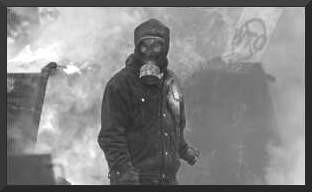
The smashed windows of the banks in downtown Seattle have until recently been regarded as the most heinous crime, oftentimes overshadowing the brutality of the police during those fall days. By the end of the WTO conference, the SPD had established a nightly curfew and invaded Capitol Hill. To the current and future ELF members present for the chaos, these experiences only cemented their conviction that the system they were fighting destroyed not only the natural world, but also human freedom, life, and joy. They knew the state would crush even the most minimal sign of disobedience.
To usher in the millennium, Jacob Ferguson, Stanislas Meyerhoff, Josephine Overaker and Chelsea Gerlach decided to burn down the Boise Cascade lumber company regional headquarters in Monmouth, a town less than a hundred miles south of Portland. On Christmas Eve, 1999, the group completely torched the headquarters of the company, causing them a loss of $1,600,000. In their communique, the group said it targeted the company for its ravaging of the Northwest and its intention to set up operations in the forests of Chile. Their communique ended, “Let this be a lesson to all greedy multinational corporations who don’t respect their ecosystems. The elves are watching. Earth Liberation Front.”
And then, on New Year’s Eve, the same four members hoped to trigger the type of Y2K panic that the capitalist media had been predicting. They drove out to the plains near Bend, Oregon and took down an electrical pylon for the power grid. As the tower began to fall, electricity arced across the sky and dust flew into the air. However, there was no disruption because the power was rerouted. North America continued to party as the 20th century became the 21st. There was no communique released by the group. On the morning of January first, this old crew of accomplices awoke to the future, unaware of what the next few years would bring.
The Northwest ELF cell whose exploits we have been narrating transmitted their plans to each other by attending what they called “book clubs.” A given book, such as The Dispossessed by Ursula K. LeGuin, would serve as the text in which the cell would decode their plans. With a key that read something like LINE 5, LETTER 26, the cell would assemble whole sentences until they had received their instructions and targets. In this way, they resembled the Red Army Faction of the 1970’s who used Moby Dick as their transmission device. This is just one of the ways in which the ELF cell maintained their secrecy and were able to remain free from incarceration for as long as they were active.
After their actions during the turn of the century, the cell was inactive until September of 2000. They chose the West University Public Safety [police] Substation in Eugene, Oregon, as their next target. After months of repression by local authorities against the anarchist and environmental movements, the cell believed that the radical community of Eugene would welcome a blow inflicted on the same police that had brutalized and jailed many of their friends. On the night of September 6th, Stanislas Meyerhoff, Kevin Tubbs, and Chelsea Gerlach placed two incendiary devices beside the substation. One device failed to explode while the other, placed on a bicycle locked near the substation, tipped over and caused only minimal damage to the substation. The group did not issue a communique, given the relative failure of their action.
The cell struck again on January 2nd, 2001, this time with two new, younger members. Daniel McGowan and Susan Savoie accompanied Jacob Ferguson, Stanislas Meyerhoff, and Kevin Tubbs on a journey from Eugene to Glendale, Oregon. Their target was the Superior Lumber Company, a purchaser and processor of the felled woods of Oregon. The two new members served as lookouts while the other three placed two incendiary devices in the headquarters of the company. Once they were done, the group returned to Eugene. McGowan and Savoie were entrusted to write the communique. The two traveled north to Portland where they wrote the following words: “What happened should shock no one. This year, 2001, we hope to see an escalation in tactics against capitalism and industry. While Superior Lumber says, ‘Make few items, and do it better than anyone else,’ we say, ‘choose an earth raper, and destroy them.’” During the whole of 2001, various ELF cells struck targets such as the University of Idaho Biotechnology building, various Bank of New York branches and an Old Navy on Long Island, a Nike outlet in Minnesota, and a genetically-modified cotton plant in California. In addition to this, a separate Northwest cell was spiking trees across Oregon, rendering entire portions of land purchases un-loggable. The actions and methods of the ELF were on the ascent, with the new cells proliferating at a quickening rate. However, there began to be signs of some impending calamity, some change in the weather.
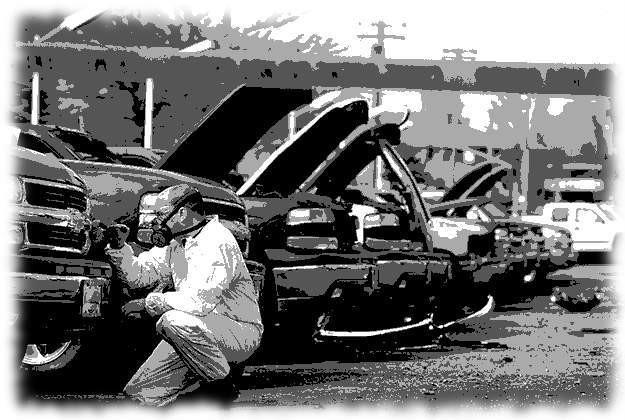
$1 million damages at Romania Chevrolet SUV dealership
In 2000, a man named Jeff Luers torched three SUVs at a dealership in Eugene. Unfortunately, he was being followed by undercover agents and was arrested shortly after his action. In March, the ELF cell decided to avenge his pending conviction. Stanislas Meyerhoff, Kevin Tubbs, and William Rodgers planned with another two new members to torch ten times more cars than Luers. It was decided that everyone participating in this action should not be Eugene residents. The two new members, Nathan Block and Joyanna Zacher, were involved in the environmental and metal scenes in Olympia and had met William Rodgers there. The group of five proceeded to the [same] Romania Chevrolet Truck Center in Eugene and torched 35 SUVs. In reference to Jeff Luers, the cell wrote in their communique, “The techno-industrial state thinks it can stop the growing resistance by jailing some of us, but they cannot jail the spirit of those who know another world is possible.”
Shortly after this, ten members of the cells decided to stage a double hit against two targets in different states on May 21st, 2001. One would be the Jefferson Poplar Farm in Clatskanie, Oregon, while the other would be the UW Horticultural Center in Seattle. The former was chosen because it was believed that genetically modified trees were being grown there. The latter was chosen because a specific professor had his offices in the building and because he conducted genetic research on poplar trees.
Meyerhoff and the four new members, Savoie, McGowan, Block, and Zacher traveled south to the poplar farm. A separate team of five composed of Rodgers and four other new members traveled north to Seattle. The new members were Justin Solondz, Briana Waters, Jennifer Kolar, and Lacey Phillabaum. Before embarking on their journeys, the cell utilized Olympia as its home base and used the houses of their friends to make their incendiary devices. At the poplar farm in Oregon, the first group set two structures and eighteen vehicles on fire. They also tagged the words ELF and YOU CANNOT TAME WHAT IS WILD on the wall of a nearby barn. The damage from this action caused nearly $1,000,000 in damage. The communique issued for this action stated that the group “torched Jefferson Poplar because hybrid poplars are an ecological nightmare threatening native biodiversity in the ecosystem. Our forests are being liquidated and replaced with mono-cultured tree farms so greedy, earth raping corporations can make more money.”
The Seattle arson completely destroyed Merrill Hall at UW [and 13 SUVs], resulting in over $3,000,000 worth of damage. The group of five waited nearby, listening to their scanners, and did not leave until they heard confirmation that their fires were raging. The group then returned to Olympia. Shortly after the simultaneous attacks against these producers of genetically modified plants, it was discovered that neither establishment was actively engaged in genetic modification at the time [ed. – since this has been proved untrue; the University of Washington’s own website cited the professor whose research was targeted as “just one of many UW professors using genetic modification in their research”, with a grant from the timber industry]. For several of the cell members, this was a terrible shock and caused Daniel McGowan, Brianna Waters and several others to leave the group.
And then September 11th happened. Already considered domestic terrorists, the ELF cell now had to be even more careful in the new climate of fear. Despite this and the problems with the previous action, a group composed of mostly old members decided to return to its roots and destroy another wild horse corral. In the summer of 2001, Joseph Dibee and Chelsea Gerlach had done reconnaissance of a Bureau of Land Management wild horse corral in Northern California. After choosing to attack this specific corral, Dibee asked Kevin Tubbs, one of the founders of the cell, to participate. Next, he asked Darren Thurston and Rebecca Rubin to be involved. Once they agreed, he picked up the two Canadian citizens after they illegally crossed the border and brought them to his house in Seattle.
Tubbs and Meyerhoff soon joined the three and they began making their incendiary devices. After making the last of their preparation, the group traveled to Olympia where they joined up with several unknown individuals. From there, they traveled to Eugene to pick up Tubbs before finally arriving near the corral on October 14th, 2001. Shortly after midnight on October 15th, the group let the horses out of the corral and then placed their incendiary devices throughout the structure. With the fire burning behind them and the horses running wild, the group returned to Olympia. Dibee, Thurston and Rubin continued north to Seattle. On October 16th, Jenifer Kolar returned Thurston and Rubin to their border crossing and the pair re-entered Canada. There, Thurtston issued the communique for the action.
And so it was that the various members of the once powerful ELF cell returned to their respective towns of Eugene, Olympia, Seattle and Vancouver. The arson of the horse coral was to be their final action and the hysteria of 9/11 only cemented their conviction to cease their activities. Some wanted to continue attacking, even going so far as to suggest committing targeted assassinations against high capitalists and leaders of industry. Ultimately, however, the group freed one last group of wild horses and then scattered themselves across the Northwest. Other cells continued to act in the region, but this particular group of people moved on to different projects. No one suspected them, nor could anyone imagine they had lit up the nights with fire and caused a panic in the timber industries of the the Pacific Northwest. Their lives from hereon out were varied and complex...
After the disbanding of the cell, the arsonists and saboteurs dispersed into their new lives, scattering themselves across the country. We do not have the means to narrate the stories of each person who participated in the ELF actions nor what they did once the cell came to an end. Nevertheless, we will provide a few stories about some of the people we respect. As you will find out next, not all of the people who participated in the assault against capitalism remained loyal to each other.
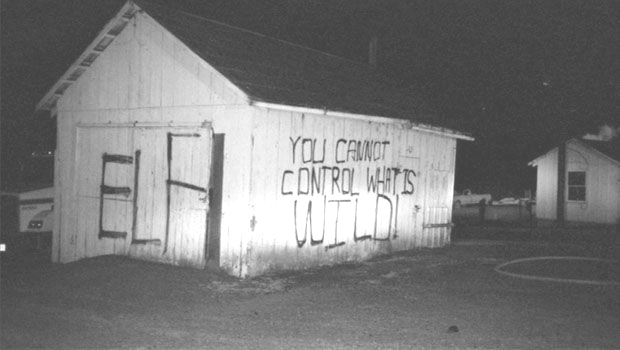
Joseph Dibee lived in Seattle after having participated in three arsons, including the synchronized attacks against two targets in Olympia. Oddly enough, he found employment with Microsoft and eventually contributed much technical expertise to the Internet Explorer browser. His work became his life and he sometimes spent 100 hours in the office. The same feverish personality that led him from a life of activism to urban guerrilla warfare seemed to still burn inside him even while he worked for one of the two major computer companies. Outside of work he went on hikes, kayaked, flew planes, scuba-dived, and explored the natural world he loved and had striven to protect. He was well-liked by his friends and co-workers. Apparently, his services were much appreciated by Microsoft as well.
Daniel McGowan, the young man who wandered into the Pacific Northwest and fell in love with the remnants of untamed nature, eventually returned his birthplace: New York City. He had grown up in a Catholic family and his father had worked as a cop for the NYPD. After rejecting a life in business, something his father frowned upon, Daniel had chosen the life of an activist. When he returned home, he eventually found employment with WomanLaw.org, a nonprofit group that helps victims of domestic violence avoid the traps and pitfalls of the judicial system. He met a woman named Jennifer and eventually married her, his new life becoming simple and increasingly removed from his previous one as an urban guerrilla.
Nathan Block and Joyanna Zacker remained close to the world they came from. They were in the Olympia metal scene and lived as a couple in a small house in the woods on Delphi Road. Nathan eventually began growing pot and soon had forty plants with which he could support himself. He and Joyanna were well-liked and well-known amongst their friends. Even their landlord described them as very nice people.
Justin Solondz remained in Olympia for a while after the cell disbanded. At the time he was dating Brianna Waters, another member of the cell. Both of them had attended the Evergreen State College and together they fought to save a forest in Oregon, working with the townspeople and making a film of the popular struggle against the logging companies. We have limited access to the facts, but it is known that at some point he and Briana Waters separated and in 2005 he traveled to Europe to begin a life of wandering.
While living these new lives, the world became increasingly bleak. The invasion of Afghanistan and Iraq took place, the public became infected with patriotic hysteria, and the housing bubble continued to bloom, creating new profits and expanding the market recklessly. It seemed as if everything that they had been fighting for had turned to nothing. All of the forests were coming down to build new developments on land that was once wild. The public was swept away into the netherworld, electing the overtly-fascist Bush administration for another term in 2004. Pockets of rebellion survived in some major cities but the fight against capitalism entered a low period in the US, and a sense of defeat hung heavy in the air.
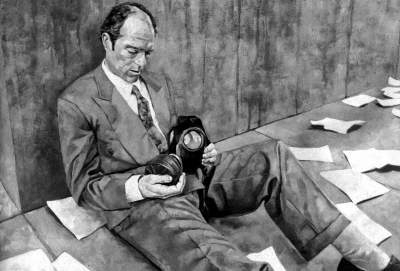
Though it may not be widely recognized as such, everyone in this country experienced a fascist coup following the attacks of September 11th. A small group of people took power and drastically altered the entire social landscape, first by providing cheap housing and easy credit to the public and then by cashing out, leaving everyone else to fend for themselves. In Chile, on September 11th, 1973, another group of fascists seized power and proceeded to turn the entire country into an experiment from which a small group of people could extract profits and then vanish.
The former members of the ELF cell lived through the rising fascism as best they could, always aware of the gravity their past actions held in the current political climate. Rather than see an uprising against the world system that was killing the planet, our protagonists beheld a public that continued to willingly plunge into its own destruction. All of them grew apart, numbing themselves to the horror unfolding around them, learning to live inside of it and survive as best as possible.
We do not know what the exiled ELF fighters would have gone on to do had they not been caught, but based on appearances they did not engage in clandestine struggle ever again and many of them permanently renounced their former tactics. When they were apprehended, the most hidden and rotten parts of the former fighters came to the surface. Only the strongest held onto themselves through the hell that we will describe...
After the final actions of the Northwest ELF cell in 2002, the strength of the national environmental began to fade. The tactical and theoretical unity of the anti-globalization era no longer kept people together and working for a common purpose. The majority of the mainstream support that had once bolstered the larger environmental network was slowly absorbed into green capitalism, becoming infatuated with corn-based fuels, windmills, and soy products.
Simultaneously, the effort to discredit the data regarding global warming reached a disturbing high and was accompanied by the overt fascism being stoked by the Bush administration. It was in the midst of this counter-revolution, with the forces of order and reaction destroying the gains of the anti-globalization movement, that the FBI began what was to become known as the Green Scare.[1]
It started simply enough. The FBI had a small lead and one suspect. His name was Jacob Ferguson, the young man who had also helped start the ELF cell. The FBI brought him in for questioning, threatened to put him in jail, and told him he would not see his son for decades. Although they only suspected him of a few minor acts of arson and doubted they could even connect him to them, the fearful Ferguson quickly revealed everything he knew about the activities of the cell. Much to the surprise of the FBI, this young man had participated in nearly every attack carried out by the cell. Totally consumed by fear, Ferguson agreed to act as an informant.
In 2005, Ferguson wore a wire and went on an FBI-funded trip across the country to meet up with his former comrades. He went to New York City and recorded a conversation with Daniel McGowan in which he was able to manipulate his old friend into admitting guilt to several arsons. When Ferguson brought up the possibility of someone becoming an informant, McGowan replied that it would be “some Judas shit.” Ferguson conducted similar operations against Stan Meyerhoff, Kevin Tubbs, and William Rogers, otherwise known as Avalon. With the information that Ferguson collected, the FBI began to organize the logistics for taking down the entire cell.
On December 7th, 2005, the FBI arrested seven people in different locations across the country. Just over a month later, three more people were arrested in what the FBI called Operation Backfire. Josephine Overaker, Rebecca Rubin, Joseph Dibee, and Justin Solodnz were able to escape apprehension. When the captured members of the cell learned the extent of Ferguson’s treachery, the same fear that possessed him began to infect their minds. Having left behind their guerrilla activity, many of the former fighters had grown used to the comforts of a normal and affluent life. It was the fear of losing this that drove the majority of the cell to begin testifying against each other.
The worst casualty of this betrayal was Avalon. Once he learned that most of his comrades were going to collaborate against each other, he wrote a simple goodbye note that read: “To my friends and supporters to help them make sense of all these events that have happened so quickly: Certain human cultures have been waging war against the Earth for millennia. I chose to fight on the side of bears, mountain lions, skunks, bats, saguaros, cliff rose and all things wild. I am just the most recent casualty in that war. But tonight I have made a jail break – I am returning home, to the Earth, to the place of my origins. Bill, 12/21/05 (the winter solstice.)” After writing this note, Avalon put a plastic bag over his head and killed himself inside his prison cell.
By the end of Operation Backfire, only Daniel McGowan, Jonathan Paul, Joyanna Zacher, and Nathan Block refused to testify against any of their former comrades or each other. All of the others made selfish and cowardly deals in order to preserve the privileges and comforts they had come to value over the earth they once fought to protect. Whether they betrayed each other or not, each convicted member of the cell generally received 4–7 years each. Except for Jacob Ferguson. He received no jail time.
Despite this, multiple other ELF cells continued to operate in the greater Puget Sound area during this time. On April 13th, 2005, an ELF cell burnt down a house that was part of a new golf course subdivision in Sammamish. They left a message painted on a bed sheet that read “Where are all the trees? Burn, rapist, burn. E.L.F.” Between July 27th and July 29th, another cell burnt down two [uninhabited] homes built in what had once been forests in Whatcom County. Starting on November 25th and lasting until the end of January, 2006, the ELF burnt down houses and construction equipment in Bothell, Kenmore, and Camano Island every week and half. While there is no direct confirmation, this offensive could be seen as retaliation for the arrests taking place during this time period.
Just as Briana Waters was being sentenced for her role in the infamous UW arson in March, 2008, another ELF cell burnt down four multimillion dollar Street of Dreams houses in Woodinville. This was to be the biggest environmental arson in the Puget Sound area and served as a reminder that the fight to save the planet still had life left in it. Law enforcement who responded to the inferno found a bed sheet nearby with these words painted on it: “Built Green? Nope black! McMansions in rural cluster developments are not green. ELF.”
We will conclude the story of the Northwest ELF. For now, take comfort in the fact that the dream some of them once had survived repression, suicide, betrayal, and entrapment. It lives on still in dozens of cells across the planet, fighting for the health and continuity of the earth.
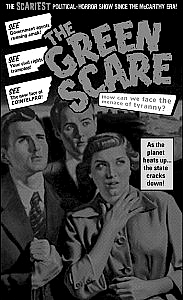
While the Green Scare of 2006 may have been the end for one particular cell, the repression certainly did not stop the idea and concept of the ELF from growing. In the immediate aftermath of the arrests, multiple new houses were burnt by cells in Guelph, Ontario. The communiques issued after these arsons contained language against unrestrained development and were dedicated to the memory of Avalon, a member of the Northwest cell who killed himself while imprisoned by the state.
And then, in the last days of 2008, a group calling itself Eco-Anarchist Cell For Direct Attack decided to go on a spree in Mexico City (DF). First they threw multiple Molotov cocktails at the facilities for the new metro line, the construction of which had already resulted in evictions and tree clearing. Then the group destroyed a large telephone wire box belonging to Telmex,[2] rendering over 100 lines useless. In addition to this, they completely destroyed eight telephone booths owned by the same company. Finally, the group burnt an ATM at a Banamex bank. The communique claiming this action ends, “How beautiful it is to see revenge of the exploited and the oppressors squeezed! How beautiful is the fire that frees! How beautiful is the abolitionist fire of the anti-authoritarians! No to metro line 12! Stop the deforestation and the displacement of entire families! For every eviction or abuse of power... fire in the streets!”
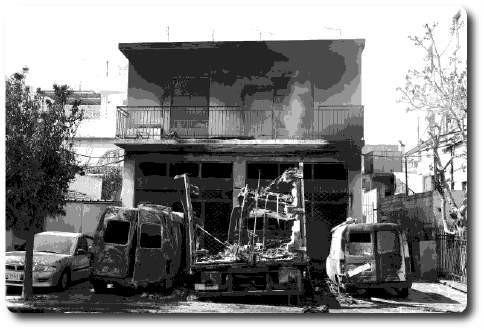
Lobby, truck & two vans of an industrial poultry operation arsoned in Athens, Greece, by E.L.F. 'Synapses of Ignition for the Polymorphous Anarchist Struggle', 13.05.15
Although not officially claimed by the ELF, this group operated in the same manner and their action signaled the beginning of a new offensive against the destroyers of the earth. A few months later, the Frente de Liberación de la Tierra (ELF) burnt a construction machine that was being used to build a new campus at the National Autonomous University of Mexico in DF. They also destroyed the new administrative offices in the campus.
In the beginning of their communique they write, “We were informed that the university had been destroying a large part of the ecological reserve where a so-called ‘education’ center is being built. Several varieties of trees and diverse plants were cut down, considered to be in the way of their ability to expand their facilities and their mastery over nature. The progress and education that they extol in their classrooms is always based on domination and anthropocentrism. In this act by the UNAM, it is more than clear that not only do they wish to dominate and mold the minds of students, they also seek to expand the same control over the land and the animals that inhabit her [sic].”
Over the course of 2009, ELF cells across Mexico began attacking targets in a diffuse offensive. Telmex remained one of their primary targets, as did the practice and spectacle of bullfighting. Multiple groups and cells set barricades aflame in the middle of highways, burnt construction equipment, burnt police stations, and freed abused horses. In 2011, an ELF cell aligned with the Informal Anarchist Federation [ed. – see Return Fire vol.3 pg80] bombed a police station in Coacalco. One month later, a different ELF cell burnt facilities belonging to the National Institute of Forestry, Agricultural, and Livestock Research in Texcoco. These facilities were used to do genetic research on plants. The attacks in Mexico continue to this day.
In Russia, the ELF has also found rich soil. In 2011 alone, there were dozens of instances of arson and sabotage committed by the ELF, the first of which was the torching of construction equipment in the forests outside Moscow on New Year’s Eve. Most of the activity centered around the defense of the Khimki forest, one of the few remaining wild places in the Moscow area.
The government and developers had plans to destroy it, put in a large freeway, and build housing and strip malls. In a rare development, the ELF and the general public had united in their efforts to stop development and had forced President Medvedev to halt the project in the summer of 2010. A communique for an action in July of that year reads, “On July 17 2010 a tracked tree transporter was torched by a group of ELF activists. The action took place at the road construction site near Sheremetjevo airport in Khimki forest, North of Moscow, Russia. We support local activists in their fight against deforestation campaign of Moscow authorities, although we disapprove of their half-hearted liberal tactics.”
The battle for the Khimki forests has still not ended, but it represented a new era for the ELF. Unlike the schisms and splits that had occurred in the US between the environmental movement and the ELF guerrillas, the two sides in Russia were able to work together in their fight against Moscow and the international development companies. When suddenly the president himself suspended the project, it was as if the endless circle of history had been broken and for once, a group of humans using a diversity of tactics was united against the exploitation of the earth.
The last action [at time of writing] related to the defense of the forest took place on July 21st, 2012.[3] The full communique reads, “After having received news of new tree-cutting activity in Khimki forest, we decided to visit the workers. We aimed for 2 trucks and excavator parked on the clear cut. They were completely destroyed. Our solidarity goes out to eco-activists who broke the arm of private guard who was guarding the clear cut (this piece we learned from news). Enough of pseudo-legalism! Do like us, do better than us.”
The rulers of the world will never succeed in wiping out any of these groups, including the ELF. While the cell in the Northwest may have been arrested and neutralized, their efforts and examples live on from Indonesia to Mexico, from Russia to Chile. We wish everyone good luck, especially you.
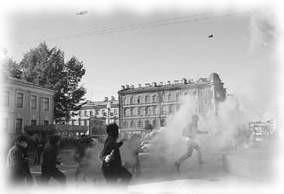
APPENDIX: ‘By The Light Of The Moon’
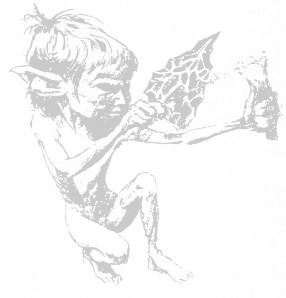
Last night, November 4th [2009], we went out among friends by the light of the moon in order to sabotage companies that destroy the environment.
This time it was CARSO’s turn, a firm linked to CICSA, one of whose owners is the bastard son of Carlos Slim; it is also one of the companies that, together with ICA and ALSTOM, is currently destroying large portions of ecosystems with the construction of a new metro line in Mexico City, imposing their damned progress on animal species and different types of trees.
A construction site belonging to CARSO was found on the outskirts of the outer Mexican expressway network in Mexico State by crossing the expressway and a sewage canal. The terrain was perfect; many trees covered our dark shadows.
Armed with our backpacks, masked up and full of resolve, we crossed the lanes with automobiles passing by at high speed, jumped the small barbed wire fence, and then cut the wires in order to make our escape easier; previously we had made a path in order to go down the hill covered by grass and weeds growing around the banks of the canal, so we followed the path and found ourselves behind a tree, where we divided our equipment and split up.
Some comrades went to the left and others went to the right; the signal to start attacking was the flash from a Molotov, which sadly was not what we expected, but the menacing fire that illuminated the walled-in CARSO construction site began, followed by a shower of stones, bottles, and acid bombs (made with marbles and small metal objects). Federal Police (PF) inside the site started to come out in order to see who was attacking them, but they were unsuccessful, because after something was thrown we took cover behind the trees and branches. When our escape began, the police could not come over to stop us because the sewage canal separated us from them, and they had no path or bridge by which to cross it. Before leaving the terrain, we flung explosives made from dynamite, paper, and a fuse, combined with metal objects for greater destructive power. These weapons exploded, leaving an echo in the middle of the night and alerting the wicked Federal Police.
This attack was not only against a construction site that is destroying the environment, it was also against the police, as we demonstrate that we can be strong if we intend to and if we fight for what we want.
Solidarity with the prisoners and people under investigation in Guadalajara, Mexico City, León, Mexico State, and the world!
Because we all have something of Barry [Horne][4] in us whenever we leave words behind and start acting, we remember him with this action!
– Earth Liberation Front
[1] ed – Named in reference to the ‘Red Scare’ of the 1940’s and ‘50s, which also saw legal and extralegal action by the U.S. government (against those accused of communist or anarchist sympthies or activity), aiming to harshly punish a few individuals in order to repress many more.
[2] ed. – As comrades of those lands noted, “Telmex is a company that not only promotes bullfights, damages and destroys the planet with its telephone antennas, promotes massive lazy stupidity with its internet cables, and gives people cancer with its telephones and telephone antennas; Telmex also builds private prisons and prisons with private-federal investors in Mexico. Carlos Slim, the owner of this Mexican monster is also owner and co-owner of other companies that participate in megaprojects of urbanization, gentrification and environmental destruction, companies such as ICA, for example.
[...] In this scenario of attack, Telmex has always been a target of anarchists and other groups fighting for animal or earth liberation, and we see no reason why today, when Telmex is acquiring another major role as a prison-building company that supports the idea of prison, it should stop being one. Evidence of the attacks against this company is the fact that, from 2001 to 2012, 696 attacks were carried out – of those that were recorded – against Telmex properties around the country (attacks that consisted of the destruction or disabling of telephone booths, destruction of telephone and internet control boxes, burning of company trucks, burning telephone towers, a bomb threat at Carlos Slim’s Plaza Delta Mall, an arson attack at a Telmex collections office), actions carried out from various perspectives and motives, but always with the intent to sabotage the communications monster. The most recent actions reported were the burning of a company truck in January 2016 and the disabling of 13 telephones in Ciudad Nez, State of Mexico, on June 17, 2016.
Sabotaging this company isn’t as difficult as people think. According to what we’ve seen, the majority have been sabotages easily reproduced by anyone, such as disabling payphones. Some have been burned, others destroyed with a firework set off with a cigarette embedded on the wick as a timer, and many more sealed with rubber cement and paperclips. In the best cases, disabling telephone and internet control boxes have been done with rudimentary incendiary devices or with acid sprinkled on the cables inside the box, or simply cutting the small cable lines. Against telephone poles (not cell towers) some have opted to knock them down or have simply cut the wiring. Against trucks belonging to this ecocidal company, rudimentary incendiary devices have done their jobs well. But above all it is the creativity that materializes from our desires for the spread of sabotage and its replicability.
There is no difference between big or small sabotage, they are all indispensable in the process of insurrection.

July 2011: excavator clearing forest in Sörmland, Sweden, gets cables cut, E.L.F. tagged, then fire-bombed
We are not for “striking a blow at the heart of the state,” as along with this claim being part of the logic of the taking of power, it otherwise would delimit the insurrectionary goal into a centralized attack when part of the goal is that sabotage spreads and is not a single attack every now and then carried out by a group of professionals, but rather many daily attacks against a world that stifles freedom, carried out by those who want to, as every attack is liberating. Nor are we for “hitting where it hurts,” as along with this claim smacking of the quantitative, it delimits the insurrectional goal into attacks against a single structure within the pillar of domination, when part of the goal is the generalization of revolt, that the attacks be against all aspects of domination or that the goal be to attack, from the largest to the smallest, at an individual or affinity group level. Besides, hitting where it hurts, does the occasional – due to the need for specialization – attack really hurt? Why settle for what hurts the system? Why not destroy it? For us, revolt and insurrection are daily acts that take place within ourselves and are externalized from us as strikes against power.
We are in favor of an anarchy that understands attack as multiform and daily, carried out by those who desire to be free in the here and now, far from all specialization and professionalization (of the pen and the act). We understand anarchy as a tension with what exists, as a project for the destruction of power, and we are fighting to build a reality of struggle and true confrontation with domination. Telmex is just one of the pillars that sustain power, the state and capitalism. Telmex has many branches ready to receive an attack from those freedom-seeking individuals”.
[3] ed. – See Special Hydraulic Fracture for more recent action around the Khimki defence. Earlier, workers’ sheds had been molotoved, and 12mm carbine weapons fired on site machinery.
[4] ed. – see Return Fire vol.1 pg64